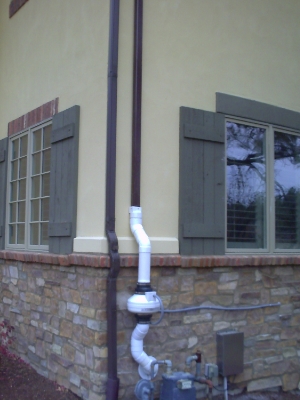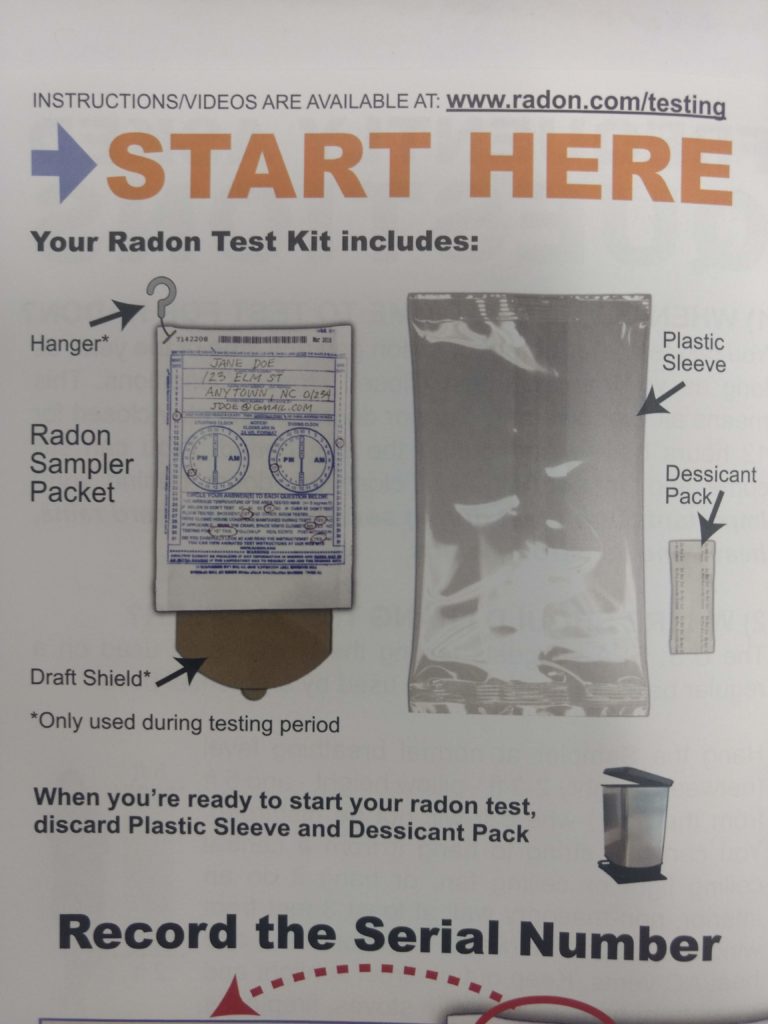Actually, smokers are approximated to be 25 times a lot more in jeopardy from radon than non-smokers. Radon is the most important cause of lung cancer after cigarette smoking. It is approximated that radon triggers in between 3-- 14% of all lung cancers in a nation, depending upon the ordinary radon level and the smoking occurrence in a nation. Federal agencies, such as the Nuclear Regulatory Payment (NRC) and also the Occupational Safety as well as Health And Wellness Administration (OSHA) set limits on exposure to radon (as well as radon progeny) in the work environment.
According to the Environmental Protection Agency, radon is found in every state. It's a naturally occurring radioactive gas generated by the break down of uranium in dirt, water, and also rock. Due to the fact that the air pressure inside a house is commonly lower than the pressure in the soil around its structure, radon is attracted right into the house through cracks in the structure and also other openings. Considering that 2018, our typical article mitigation radon examination comes back at 0.4.
Outside mitigation systems as well as one of the most set you back economical and common kind of radon reduction. In an exterior system, the primary suction point is inside the house (typically in an unfinished area) along the structure wall. The PVC piping runs up the structure wall and also left through the joist pocket. On the exterior of the house the fan is placed up and down and also discharge is added the side of the house.
We guess that this fad may be one more effect of the rising air-tightness of structures in the region, yet that this is additionally combined with the expanding occurrence of a/c systems. Undoubtedly, air conditioning frequency rose by 5-- 7% in our study region between 2013-- 201735.
How much does it cost to run a radon fan?
Known risk factors for lung cancer include: Risk by age: About two out of three lung cancers are diagnosed in people over age 65, and most people are older than 45. The average age at diagnosis is 71. Family history: Genetics may predispose certain people to lung cancer.
It's inadequate to understand that the house next door has actually been tested, because radon levels can vary from one structure to the next. The only method to recognize without a doubt if you have way too much radon in your house is to examine for it.
Radon gas is originated from rocks and dirt in the ground, starting with the radioactive decay of normally occurring uranium. There is constantly some radon in the air around us, however a trouble occurs when it leakages in via splits or spaces beneath the house, triggering a prospective accumulation of radon gas inside the residence. Similar to asbestos-related lung cancer cells, there is a major requirement to supply conclusive evidence that radon carcinogenicity is linearly pertaining to exposure, without a limit. High radon levels have actually been located in all 50 states and in all parts of Colorado.
The temporary examination package remains in your home or office for 2 to 90 days. So you might want to comply with up the first temporary test with a second test. An in-line fan attracts air through https://www.openlearning.com/u/cyndy-qauioh/blog/RadonTesting/ the air vent pipeline, sucking radon from the ground under the basement flooring or a sump pump pit.
How do you get rid of radon gas in a basement?

The radon fans are guaranteed by manufacturers for 3 – 5 years. Their replacement cost, including installation, is usually $300 to $600. Homeowners are aware that the fan must run continuously 24/7, year after year. The typical estimate of the electricity cost is $150 per year.
A little blower, usually no more than 15 cubic feet per min (0.7 l/s) may after that extract the radon-laden air from these tooth cavities and also tire it to the out of doors. With well-sealed HVAC air ducts, very small negative pressures, maybe as little as 0.5 pascal (0.00007 psi), will avoid the entry of extremely radon-laden wall surface cavity air from participating in the breathing zone. Examining for radon airborne is completed using passive or active tools put in the building. Some devices are immediately sent to a lab for analysis, others determine the outcomes on-site. Radon-in-water testing calls for a water example being sent out to a laboratory.
Radon in Houses.
This is a map revealing radon levels throughout the USA. The yellow programs moderate degrees and the eco-friendly programs lowest levels. In the United States there are areas of high levels of radon. These locations shows the type of bedrock underlying the nation.
Should I buy a house with high radon?
EPA RECOMMENDS: If you are buying or selling a home, have it tested for radon. For a new home, ask if radon-resistant construction features were used and if the home has been tested. Fix the home if the radon level is 4 picocuries per liter (pCi/L) or higher.
- The only way to understand if the degrees in your home are more than what is considered "safe" is to test.
- This set off a nationwide panic-- homeowners feared their home may have similarly high degrees.
- EPA's Indoor Environments Division supplies an Internet site pertaining to interior air quality issues, consisting of radon, asthma, and environmental tobacco smoke/secondhand smoke.
- If you obtain water from a public water supply, figure out whether the comes from a surface area (storage tank, lake, or river) or a ground water (underground) source.
- Homes that are beside each other can have different indoor radon degrees, making a neighbor's test result a bad predictor of radon risk.
- You might be being revealed to high level of radon under the incorrect pretense that you are risk-free since you have a mitigation system if you don't execute normal follow-up screening.
Does seller have to fix radon?
It's very likely that your future buyer will make you fix the radon problem before they will purchase the home. It's good to just take care of it during your real estate deal. Sometimes the seller pays for it all, sometimes they fund a credit and sometimes there is a split.
Can you smell radon?
The “safe” level of radon exposure is no radon at all. The EPA's recommended level for radon mitigation is 4.0 pCi/L or above. It's estimated that 1 in 15 American homes have an elevated level of radon gas.
Where is Radon most commonly found?
There's no single method that fits all radon removal system needs. Common techniques include: Sub-slab depressurization, where suction pipes are inserted through the floor or concrete slab into the concrete slab below the home. A radon vent fan then draws out the radon gas and releases it into the air Do dehumidifiers reduce radon? outside.
How many people die each year from radon?
Radon is responsible for about 21,000 lung cancer deaths every year. About 2,900 of these deaths occur among people who have never smoked.
Is radon something to worry about?
The average home has about 1.3 pCi/L of radon. Such levels aren't enough to worry about, but under the right conditions, they could make you sick. According to the EPA, a nonsmoker who was exposed to average levels of radon for a lifetime would have a 1 in 500 risk of developing lung cancer.
What causes radon?
Being exposed to radon for a long period of time can lead to lung cancer. Radon gas in the air breaks down into tiny radioactive elements (radon progeny) that can lodge in the lining of the lungs, where they can give off radiation. This radiation can damage lung cells and eventually lead to lung cancer.
Can I install my own radon mitigation system?
In most cases, pros charge about $1,500 to install a radon mitigation system, but you can do it yourself for only about $500 in materials. So if you're fairly handy and have some carpentry, plumbing and electrical skills, you can install your own system in a weekend and save yourself a thousand bucks!
Why is radon bad for you?
Radon produces a radioactive dust in the air we breathe. The dust is trapped in our airways and emits radiation that damages the inside of our lungs. This damage, like the damage caused by smoking, increases our risk of lung cancer.
What is involved in radon mitigation?
Mitigation of radon in the air is accomplished through ventilation, either collected below a concrete floor slab or a membrane on the ground, or by increasing the air changes per hour in the building. Treatment systems using aeration or activated charcoal are available to remove radon from domestic water supplies.
Where is radon found in the home?
Radon is a radioactive gas that has been found in homes all over the United States. It comes from the natural breakdown of uranium in soil, rock, and water and gets into the air you breathe. Radon typically moves up through the ground to the air above Visit this site and into your home through cracks and other holes in the foundation.
How much does it cost to fix radon in house?
The cost of a mitigation system may vary according to the home's design, size, foundation, construction materials and the local climate. Radon reduction systems average costs nationally are $1,200 with a range from $800 to $1500 common depending on house and market conditions.
How common is radon in a home?
It's common: About 1 in every 15 homes has what's considered an elevated radon level. The gas is odorless and invisible, says the EPA, and it causes no immediate symptoms, so the only way to know if your home is affected is by testing your individual residence.
How bad is a radon level of 8?

The EPA strongly recommends radon mitigation if your radon levels are above 4 pCi/L. While radon levels below 4 still pose a health risk. They recommend you consider mitigation if your radon levels are between 2 and 4 pCi/L. They are quick to point out that there is no known safe level of radon.
Can radon cause headaches?
Radon gas is odorless, colorless, tasteless and radioactive. Radon gas seeps into the home through radon entry points in the foundation. Because you can't smell radon gas, the only way to know if you have it in your home, office or school is to test for it.
What kind of cancer is caused by radon?
Radon decays quickly, giving off tiny radioactive particles. When inhaled, these radioactive particles can damage the cells that line the lung. Long-term exposure to radon can lead to lung cancer, the only cancer proven to be associated with inhaling radon.
How do I make my house safe from radon?
Install a layer of gas-permeable aggregate, such as four inches of gravel, beneath the slab or flooring system of your home if you don't have a crawlspace. Cover this layer or your crawlspace floor with plastic sheeting to stop radon gas from moving past that level and into your home.